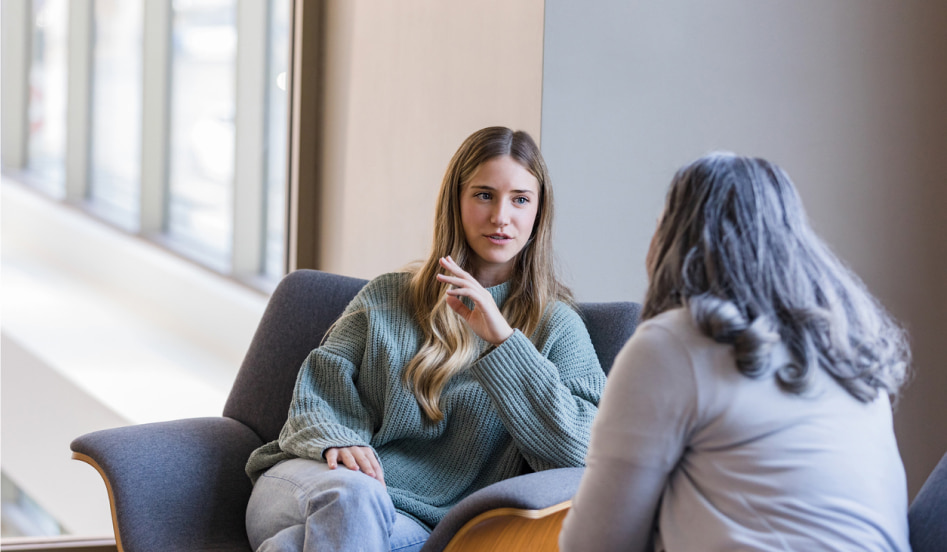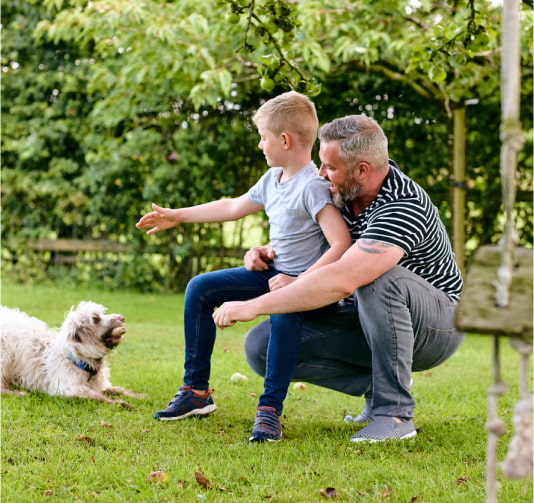Managing situations involving cruelty and neglect
Whether you need practical strategies, tailored advice, or insights into preventing harm, we’re here to support you in helping young people and animals thrive.

Reflective resources
Opening conversations about animal harm
These resources are designed to help families and professionals support young people who may be at risk of, or have already harmed, animals. Each activity encourages open conversation, reflection, and critical thinking, providing a structured first step towards understanding and addressing their actions. For further support, please reach out to us at interventions@rspca.org.uk.
Reasons why people cause neglect and cruelty
Through research and experience, we’ve gained valuable insights into the many reasons why young people may show neglect or cruelty towards animals. By recognising these factors, we can work together to guide them towards empathy, responsibility, and positive change. The main reasons for cruelty and neglect are:
- Victims of crime and substance misuse.
- Curiosity and learned behaviour.
- Peer pressure and carelessness.

Your resources are really useful! The content was of the right ability to share and all suitable information. The young person has been able to understand why what they did was inappropriate.
First aid strategies
Creating a safe, happy environment for pets and young people is key to reducing the risks of neglect or unintentional cruelty. Here are some practical tips to build a positive bond with pets:
Ensure safety before building trust
Always keep both the young person and the animal safe by maintaining a clear separation. Supervise all future interactions carefully and seek further guidance on how to rebuild a positive and respectful relationship between them.
Set Clear Boundaries
Before bringing a pet into your home, or if you already have one, discuss the do’s and don’ts with the family. Simple rules like leaving pets alone when they’re eating or sleeping help everyone stay safe and happy.
Introduce Responsibility Gradually
While children may be excited about having a pet, caring for an animal is a big responsibility. Legally, those under 16 can’t be solely responsible for a pet, but you can involve them in age-appropriate tasks like feeding or grooming - with supervision.
Give Pets a Safe Space
Just like us, animals can feel overwhelmed. Make sure your pet has a quiet, secure place to retreat to when they need time alone. Respecting their personal space helps build trust.
Respect Personal Space
Hugging is one way people show love, but many pets find it uncomfortable or even scary. Instead, encourage other ways to bond, like playtime or enrichment activities that your pet will enjoy and appreciate.
Address Jealousy
Sometimes children may feel left out when pets get attention from their primary carer. Talk to them about the pet’s needs and find ways to help them build a positive relationship, like learning fun tricks or helping with care routines.
Need more advice?
Our interventions team is here to provide guidance and resources for educators, social workers, and anyone working with young people. Whether you’re facing a specific situation or just have a question, we’re here to support you.
- 1 More Activities. We can provide tailored resources for your needs.
- 2 Advice on Specific Situations. We can offer practical advice and strategies to help.
- 3 Not sure where to start or need more information? Reach out to us for answers and guidance.



